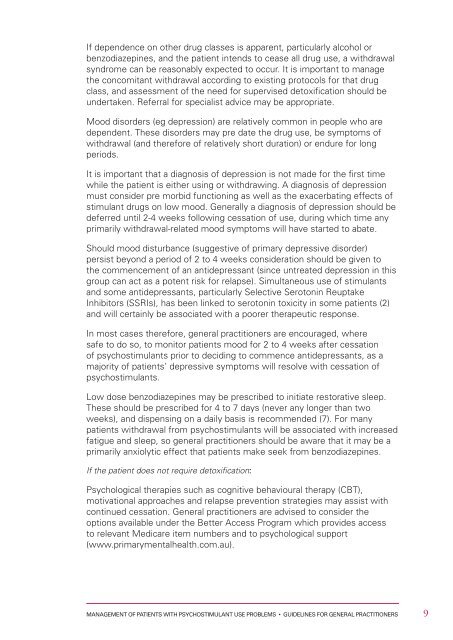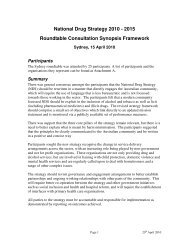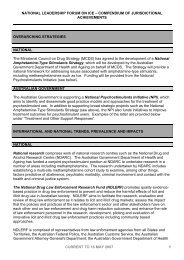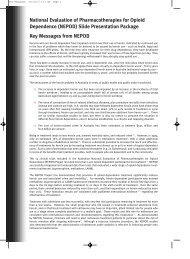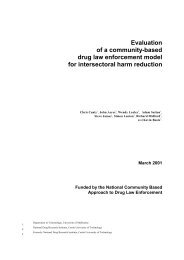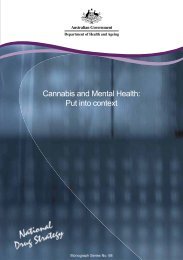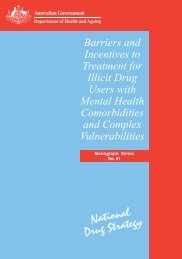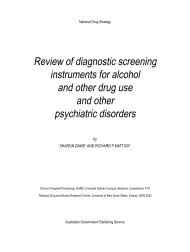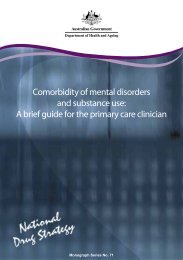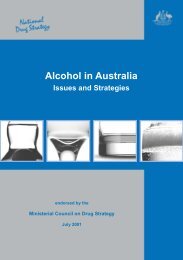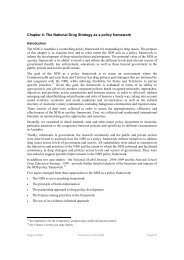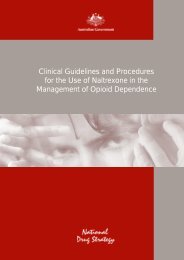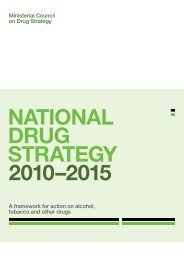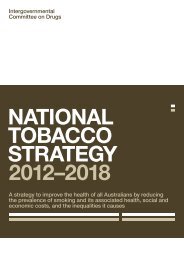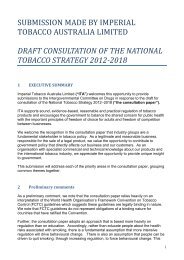Management of patients with psychostimulant use problems
Management of patients with psychostimulant use problems
Management of patients with psychostimulant use problems
You also want an ePaper? Increase the reach of your titles
YUMPU automatically turns print PDFs into web optimized ePapers that Google loves.
If dependence on other drug classes is apparent, particularly alcohol or<br />
benzodiazepines, and the patient intends to cease all drug <strong>use</strong>, a <strong>with</strong>drawal<br />
syndrome can be reasonably expected to occur. It is important to manage<br />
the concomitant <strong>with</strong>drawal according to existing protocols for that drug<br />
class, and assessment <strong>of</strong> the need for supervised detoxification should be<br />
undertaken. Referral for specialist advice may be appropriate.<br />
Mood disorders (eg depression) are relatively common in people who are<br />
dependent. These disorders may pre date the drug <strong>use</strong>, be symptoms <strong>of</strong><br />
<strong>with</strong>drawal (and therefore <strong>of</strong> relatively short duration) or endure for long<br />
periods.<br />
It is important that a diagnosis <strong>of</strong> depression is not made for the first time<br />
while the patient is either using or <strong>with</strong>drawing. A diagnosis <strong>of</strong> depression<br />
must consider pre morbid functioning as well as the exacerbating effects <strong>of</strong><br />
stimulant drugs on low mood. Generally a diagnosis <strong>of</strong> depression should be<br />
deferred until 2-4 weeks following cessation <strong>of</strong> <strong>use</strong>, during which time any<br />
primarily <strong>with</strong>drawal-related mood symptoms will have started to abate.<br />
Should mood disturbance (suggestive <strong>of</strong> primary depressive disorder)<br />
persist beyond a period <strong>of</strong> 2 to 4 weeks consideration should be given to<br />
the commencement <strong>of</strong> an antidepressant (since untreated depression in this<br />
group can act as a potent risk for relapse). Simultaneous <strong>use</strong> <strong>of</strong> stimulants<br />
and some antidepressants, particularly Selective Serotonin Reuptake<br />
Inhibitors (SSRIs), has been linked to serotonin toxicity in some <strong>patients</strong> (2)<br />
and will certainly be associated <strong>with</strong> a poorer therapeutic response.<br />
In most cases therefore, general practitioners are encouraged, where<br />
safe to do so, to monitor <strong>patients</strong> mood for 2 to 4 weeks after cessation<br />
<strong>of</strong> <strong>psychostimulant</strong>s prior to deciding to commence antidepressants, as a<br />
majority <strong>of</strong> <strong>patients</strong>’ depressive symptoms will resolve <strong>with</strong> cessation <strong>of</strong><br />
<strong>psychostimulant</strong>s.<br />
Low dose benzodiazepines may be prescribed to initiate restorative sleep.<br />
These should be prescribed for 4 to 7 days (never any longer than two<br />
weeks), and dispensing on a daily basis is recommended (7). For many<br />
<strong>patients</strong> <strong>with</strong>drawal from <strong>psychostimulant</strong>s will be associated <strong>with</strong> increased<br />
fatigue and sleep, so general practitioners should be aware that it may be a<br />
primarily anxiolytic effect that <strong>patients</strong> make seek from benzodiazepines.<br />
If the patient does not require detoxification:<br />
Psychological therapies such as cognitive behavioural therapy (CBT),<br />
motivational approaches and relapse prevention strategies may assist <strong>with</strong><br />
continued cessation. General practitioners are advised to consider the<br />
options available under the Better Access Program which provides access<br />
to relevant Medicare item numbers and to psychological support<br />
(www.primarymentalhealth.com.au).<br />
MANAGEMENT OF PATIENTS WITH PSYCHOSTIMULANT USE PROBLEMS • GUIDELINES FOR GENERAL PRACTITIONERS<br />
9


